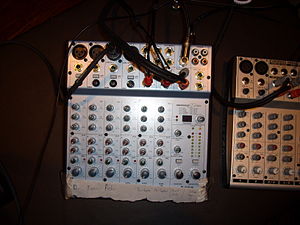Audio equipment has a special passion for us for some reason. None amongst our numbers are musicians per se, but the interest remains.
As you may know, the Android Buffet podcast is also a project of the Weneca Media Group, the unofficial parent of Gadget Wisdom and a few other sites. Much of our sound equipment collection is based on serving the needs of that podcast…and actually consists of three basic studio models.
- The Home Studio – This is a permanent installation…well, as permanent as we get
- The Mobile Studio – This is the single-person mobile studio, designed to fit in a carry-on bag.
- The SELF Studio – Used only once, at the SouthEast Linux Fest, this was enough equipment to do a multi-person show live.
Everything continues to evolve each time we assemble it for a trip. The requirements we have are simple.
- A co-host and/or guest, coming in over the Internet.
- A mostly live to tape performance…editing a podcast is a pain…so we quickly gave it up.
- Live audio streaming.
Video sounds like a lot of fun, at least as fun as doing audio. However, the amount of work and cost required to do video is exponentially higher for less of a return. Many podcasts do video as merely an extension of audio. You end up with talking heads, which is sometimes interesting, but not quite worth the effort.
Streaming, when coupled with a live chat room, is a great thing. Many shows offer both of these, and it has become essential to our podcast model. We started out hosting ourselves, but now use a third-party Icecast server. It’s running right now, running repeats. Tune in at androidbuffet.com/live.
The issues come in designing the equipment to run this. We tried slaving everything through a single computer, but using an analog mixer meant connections went into the computer and back out again, which was also confusing. So, ideally, each function should have an independent system.
- Co-Host/Outside Audio
- This has been done by a computer of varying processing capabilities as well as an old Android phone.
- Streamer
- There is no Icecast streamer for Android(volunteers to port it, anyone?)
- Tried using a Raspberry Pi, but there were some issues. Will be revisiting this with the new 512MB Pi.
- Recorder
- This has been another computer, but also a dedicated hardware recorder which supports line-in and records to SD cards for easy and quick editing.
Part of the problem is, of course, Linux. There are some limitations in Linux compatibility and software. But we aren’t changing that, or using a hardware mixer. Everything else is up for grabs.
More specifics to come, but would appreciate suggestions to simplify this, while maintaining the quality and ease of recording.


